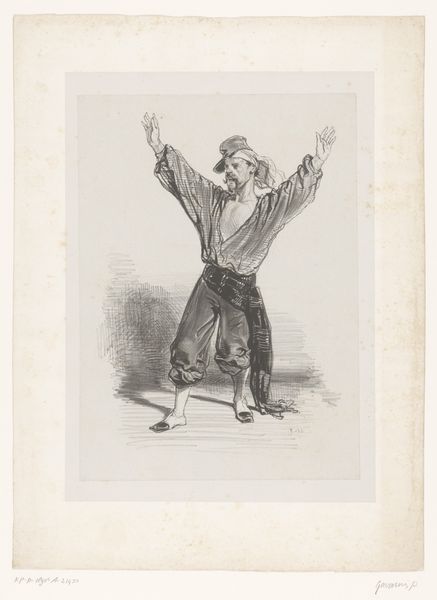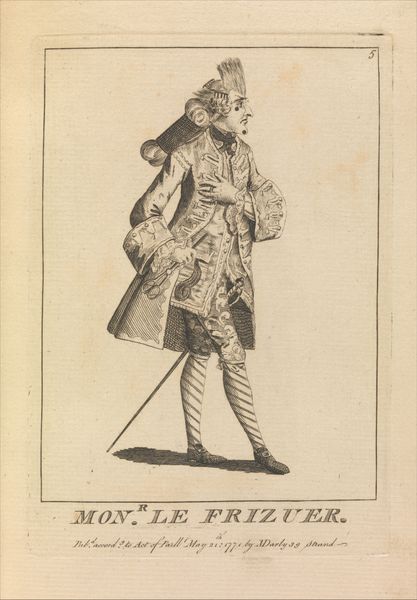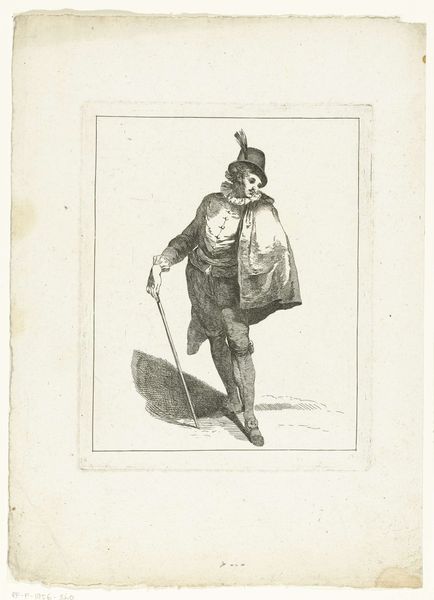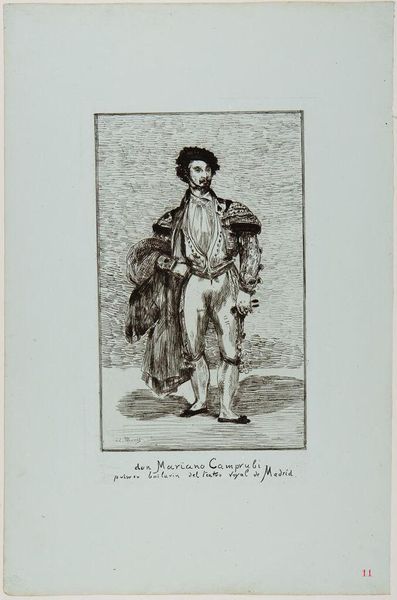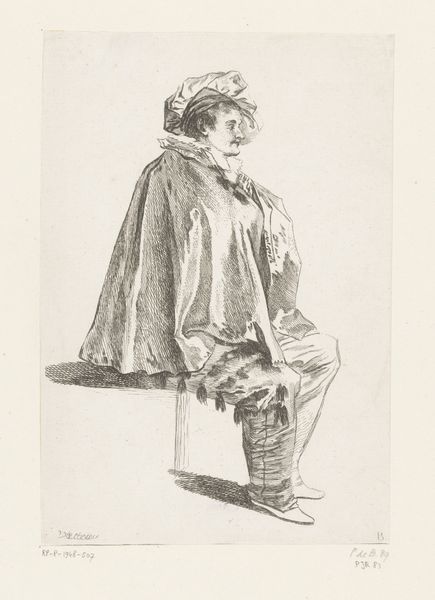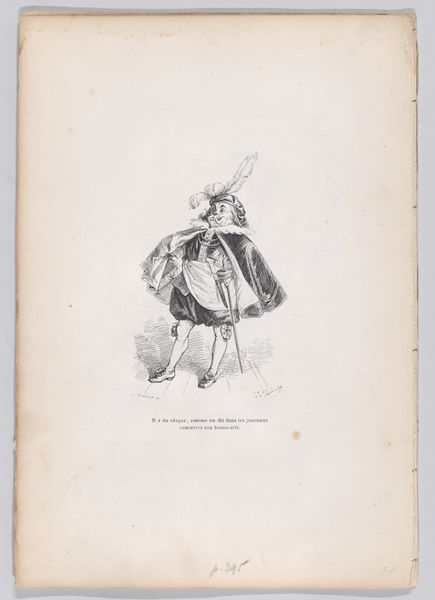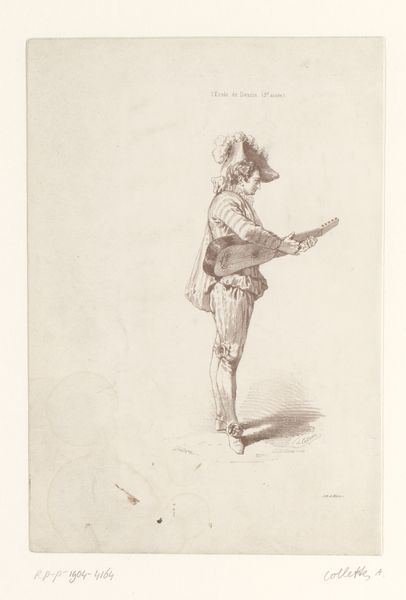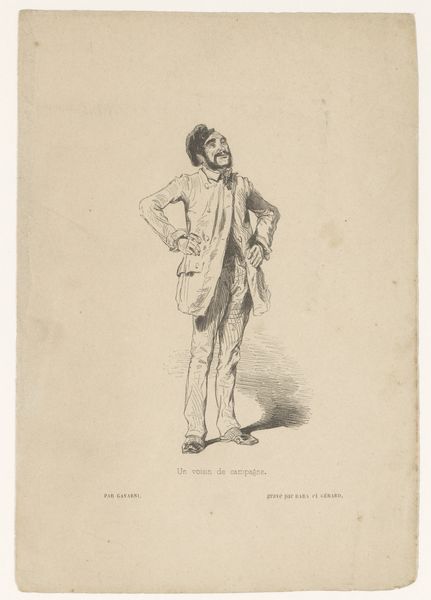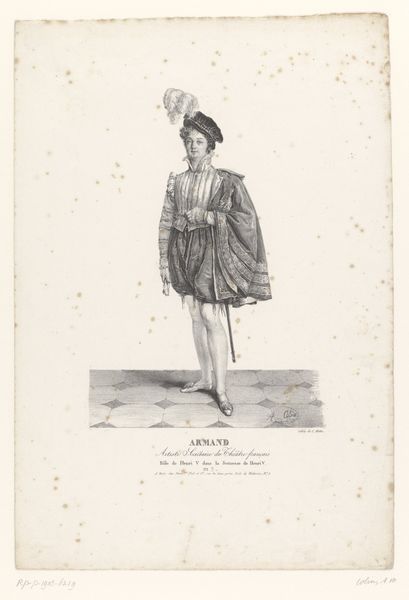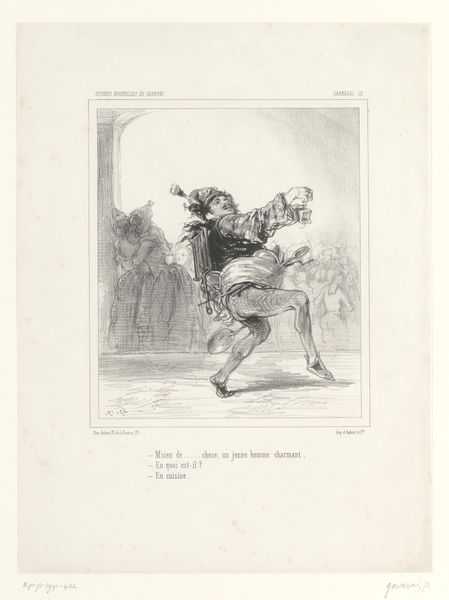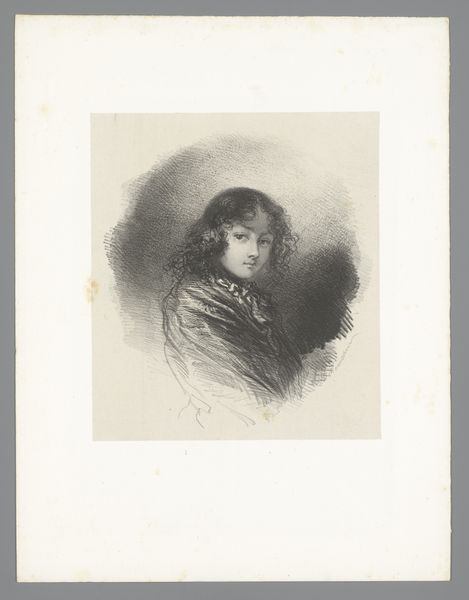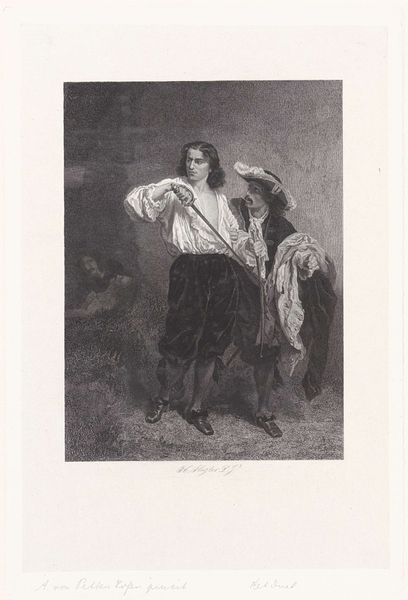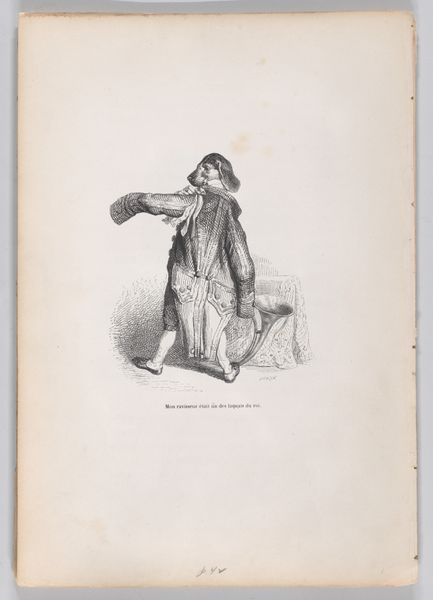
drawing, lithograph, pencil
#
portrait
#
pencil drawn
#
drawing
#
lithograph
#
caricature
#
pencil sketch
#
figuration
#
romanticism
#
pencil
Dimensions: height 312 mm, width 236 mm
Copyright: Rijks Museum: Open Domain
Curator: What a striking image! We're looking at "Singing Opera Singer with Dagger," a lithograph by Paul Gavarni, created in 1844. It's currently housed here at the Rijksmuseum. Editor: My immediate impression is one of exaggerated theatricality. The sharp, angular lines used to depict the singer create a caricature-like quality. There is an intense feeling with the figure seemingly bursting forth with emotion and gesture. Curator: Gavarni was well-known for his social caricatures in Parisian journals. This lithograph captures a specific moment within the world of Romantic opera, likely poking fun at the dramatic intensity, perhaps even excesses of the performances, especially at the melodramatic scene. Editor: Yes, you can really feel the emphasis on line, on movement. Notice how the shading around the singer’s mouth and brow enhances the drama. The lithographic technique is expertly used to create a range of textures, from the soft rendering of his face to the crisper details of the costume. The use of this technique accentuates light and shadow throughout this artwork. Curator: And what’s interesting is how Gavarni highlights the artificiality of the spectacle. The singer, adorned in an elaborate costume with that feather in his cap and thrusting that little dagger, becomes almost a symbol for the constructed emotions of operatic performance. Editor: There is some subtle mockery embedded here. The figure feels grotesque due to the contorted expression on his face and overly elaborate costume with decorative patterns. The composition directs our eye in many different places making the focal point, or figure, disorienting and confusing. Curator: I agree. Gavarni’s work serves as a great reminder that even within the high arts, there was always a space for critique and satire. The popular press offered an avenue to debate social roles, theatrical conventions, and artistic expression itself. Editor: Absolutely. It shows how closely visual analysis, noting line and composition, helps reveal embedded meanings while taking into account a socio-historical perspective. Both approaches enrich our understanding. Curator: Precisely. Artworks like this become key touchstones for broader cultural discussions and transformations within that period.
Comments
No comments
Be the first to comment and join the conversation on the ultimate creative platform.

